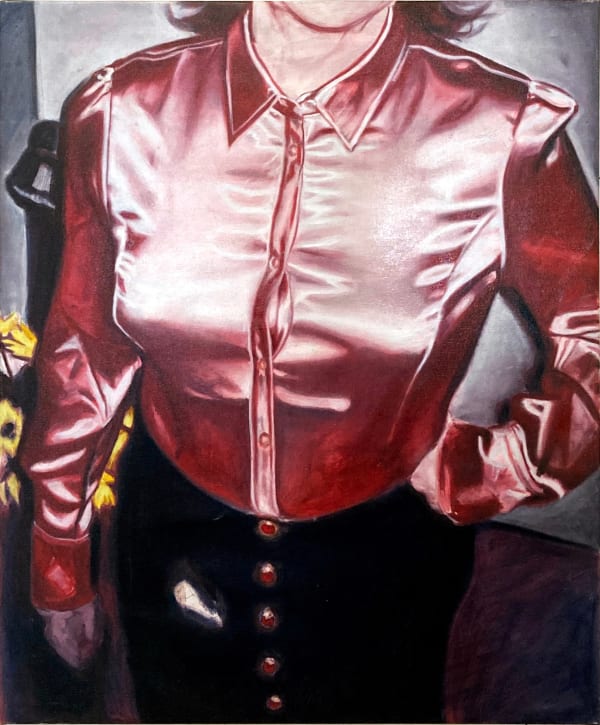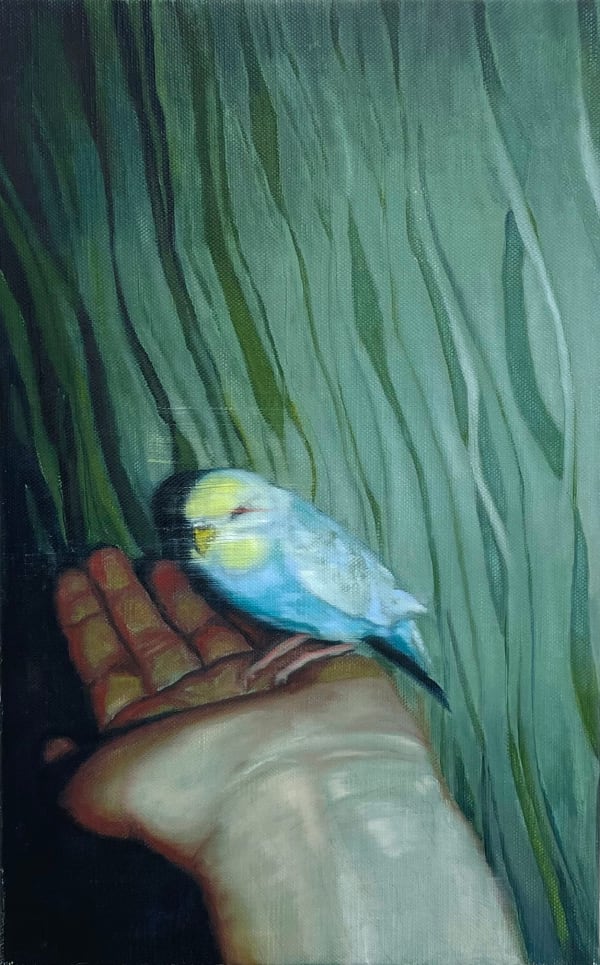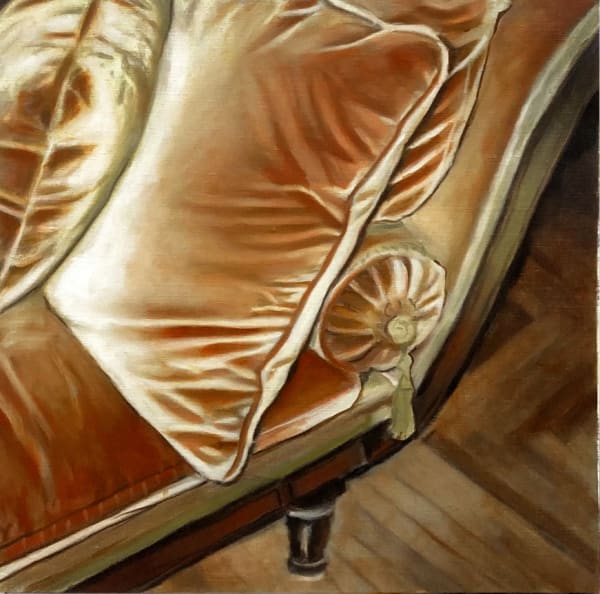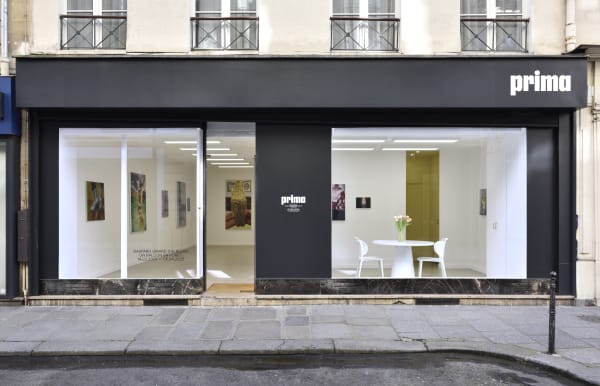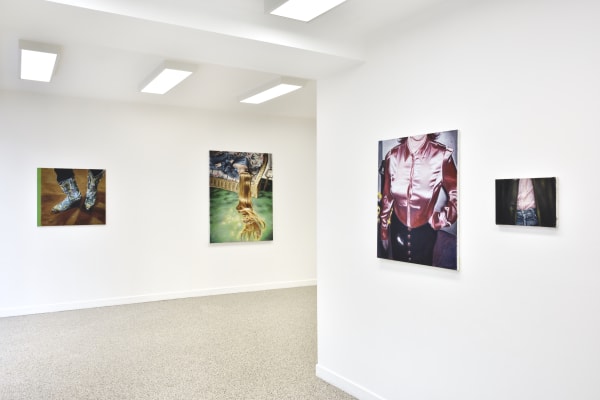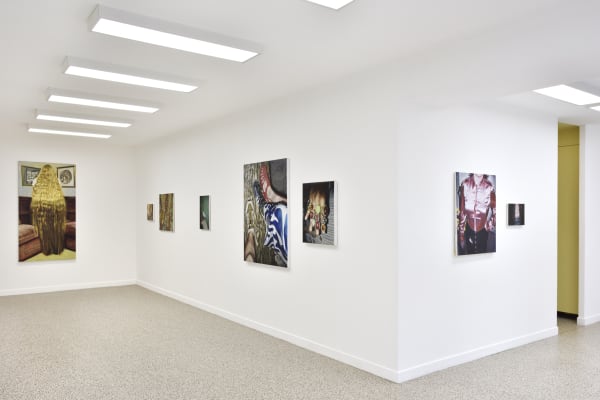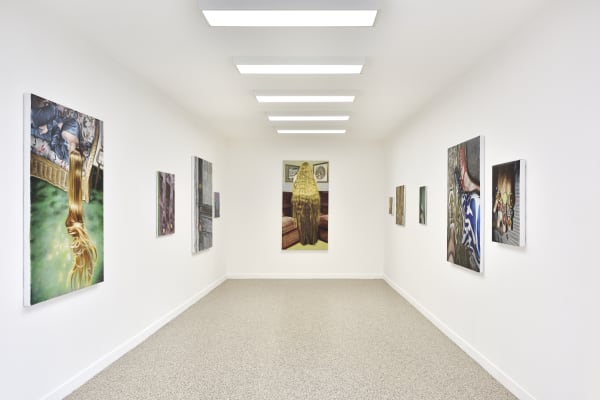GASPARD GIRARD D'ALBISSIN: Balcony in the Forest
OPENING 13 MARCH 25 (6PM-9PM)
Gaspard Girard d’Albissin (1988, France) paints from found images: anonymous photographs, fashion shots, snapshots pulled from the internet. With this exhibition, the artist takes us back to an early 2000s blog or a photo album. These fragments—a hand covered in flashy rings, a satin pink blouse, a pet parakeet, a pair of cowboy boots—are stripped from their original context, reframed, saturated with light, and meticulously reworked. Artificial light plays a central role, clinging to surfaces until they verge on the unreal. Balcony in the Forest is a refuge, a suspended moment. It is not the event that matters, but the waiting, the focus, the quiet imprint left on memory. In his studio, Gaspard Girard d’Albissin recreates this in-between state—a space apart, where painting becomes a retreat and an act of contemplation.
His approach carries a tension between the stillness of painting and the fleeting nature of his source material. A collector and rescuer of images, he gathers and transforms them into an atlas where the ordinary becomes a motif, and the ephemeral finds permanence in paint. He plays with what images reveal, what they conceal, and what ultimately endures.
"A heightened and arrested memory, against which Time itself will not prevail—that is the immediate sensation conveyed by every great painting, with that haughty and spellbinding air it has […] of stepping endlessly into the future, backwards. In essence, all painting is retrospective."
Julien Gracq* emphasized this unique power of painting—an image that, once laid on canvas, resists time and oblivion while still carrying traces of the moment it was captured. This is exactly what Gaspard Girard d’Albissin does: he seizes fragments of a fleeting present and anchors them in a painting that, even as it retains the appearance of the ephemeral (flashes, reflections, shifting textures), transforms them into lasting images. Extracted from the digital stream, these images might have disappeared, but once transposed onto canvas, they acquire a new presence—haunted by what they were, distanced by what they become.
*En lisant en écrivant, 1980



